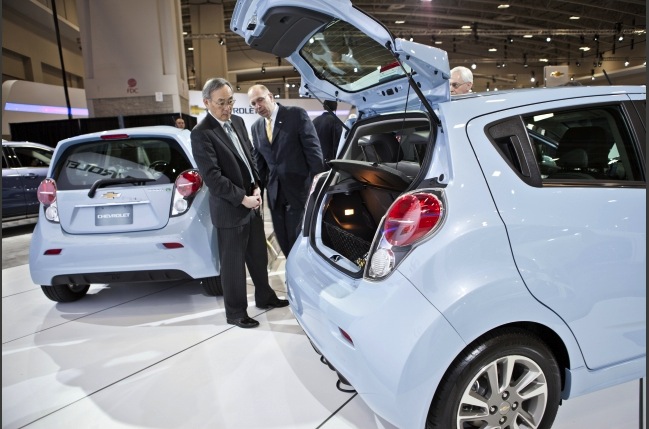21 organizations join DOE’s Workplace Charging Challenge
 Last week, Jan. 31, the Department of Energy announced that a total of 21 organizations, among them 13 large U.S. employers and eight groups, joined DOE’s new Workplace Charging Challenge. The challenge is designed to build out plug-in electric vehicle charging stations across the U.S. to help speed acceptance of PEVs. Since many EV chargers can also be powered by the sun, the challenge could also result in more solar-powered chargers, particularly in parking lots.
Last week, Jan. 31, the Department of Energy announced that a total of 21 organizations, among them 13 large U.S. employers and eight groups, joined DOE’s new Workplace Charging Challenge. The challenge is designed to build out plug-in electric vehicle charging stations across the U.S. to help speed acceptance of PEVs. Since many EV chargers can also be powered by the sun, the challenge could also result in more solar-powered chargers, particularly in parking lots.
The Workplace Charging Pledge Partners were announced last week by outgoing DOE Secretary Steven Chu. They include: 3M, Chrysler Group, Duke Energy, Eli Lilly and Company, Ford, GE, GM, Google, Nissan, San Diego Gas & Electric, Siemens, Tesla and Verizon. The companies were joined by eight organizations that have signed the Ambassador Pledge. They include: California PEV Collaborative, CALSTART, Electric Drive Transportation Association, Electrification Coalition, International Parking Institute, NextEnergy, Plug In America and Rocky Mountain Institute.
“The market for electric vehicles is expanding dramatically, giving drivers more options to save money on gasoline while reducing carbon pollution,” said Secretary Chu. “These 13 companies are taking strong steps to make charging infrastructure more broadly available to their workforce — setting an example for others to follow and helping America lead the global race for a growing industry.”
The Challenge is part of President Obama’s EV Everywhere Grand Challenge. Under that challenge the President hopes to reduced the costs of PEVs to make them as convenient to buy and drive as gasoline-powered vehicles within the next 10 years.
Under the Workplace Charging Challenge partners are assessing their workforce’s potential PEV charging demands. Then they are developing a plan to install PEV chargers for at least one of their major workplace charging infrastructure for at least one major worksite location. The challenge aims to increase the number of U.S. employers offering workplace charging by tenfold over the next five years, according to DOE.
As more people drive EVs and PEVs, they can help drive down the costs of the more expensive components like batteries, which will come down as manufacturers ramp up larger production. At the same time, electricity can provide power or driving distance at for and EV at a rate gas would have to be $1 a gallon to compete, DOE said.



